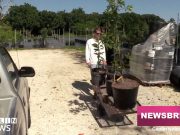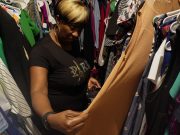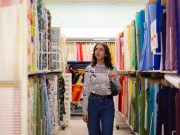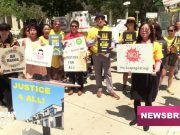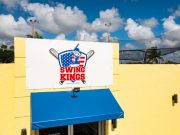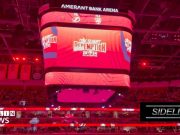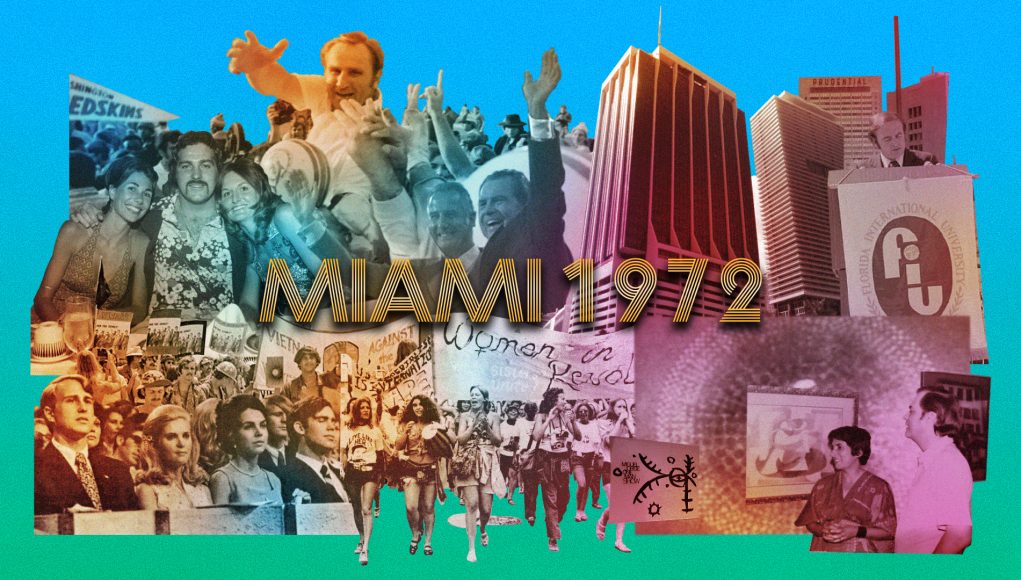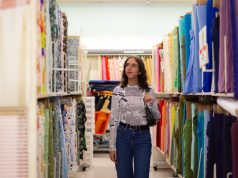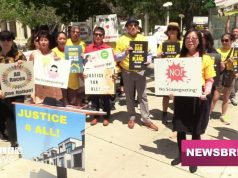Often, groundbreaking events take place in plain sight, and their importance is not fully realized until afterwards, sometimes years or even decades later. As we approach the end of 2022, it is worth looking back to recognize the anniversaries and legacies of one year in particular — 1972 — as the year that made Miami.
In many ways, the archetype for today’s modern “Miami-isms” can be traced to that period. The 1970s popularized our classic, bold, saturated colors and enduring men’s fashion defined by slicked-back hairstyles, open-collar shirts, and golden necklaces. It is interesting to note how a city so focused on living in the moment — and now aiming to drive future innovation with #MiamiTech — owes so much of what is now quintessentially Miami to the culture of that formative decade a half-century ago.
The year 1972 changed the region forever; its ripples are still felt in the city’s identity to this day.
With a population less than half of what it is today, Miami was a city in transition from the sleepy vacation town of the 1950s and ’60s into a booming global city.
At the center of this transformation was its diverse immigrant populations. Most notable was the growing Cuban exile community that had been arriving in waves, fleeing the deteriorating human rights situation under the Castro regime. The socio-economic impact has become a defining aspect of post-1960s Miami.
Socially, it was a tumultuous time, with Miami facing many issues impacting the rest of the country, including lingering unrest from the Vietnam War and a shaky economy where, like today, inflation was on the rise.
On the international stage, America was turning the tide in the Cold War. Bobby Fischer helped popularize chess with his victory in the “match of the century” against the USSR’s Boris Spassky, the first such win for the USA. Additionally, President Richard Nixon made history with his visit to China, launching an era of deepening diplomatic and economic relations that have had an enduring impact that has continued to the present day.
In pop culture, the long-running television series M.A.S.H. first hit the airwaves, and the iconic films The Godfather and Cabaret were released and immediately hailed as cinematic masterpieces. Glam Rock crossed the pond from the U.K. with David Bowie’s The Rise and Fall of Ziggy Stardust, ushering in a new wave of bold expression. This superseded 1960s psychedelia with the extravagance that would lead to the euphoria of the disco era by the mid-70s. Stevie Wonder’s “Superstition” and Don McLean’s “American Pie” topped the charts that year. The latter poetically and cathartically captured the zeitgeist of a generation. Having weathered the volatility of the 1960s, many still wondered where to go in a new decade without The Beatles, John and Robert Kennedy, and Martin Luther King Jr. Each of these era-defining icons had links to South Florida, which shared in this post-60s search for identity.
By 1971 tectonic shifts had set the stage for Miami’s breakout year as an American metropolitan center. Several local milestones in retail, tourism, and culture were reshaping the landscape. Beach tourism, previously the major economic driver in the area, was declining as a result of several developments punctuated by the opening of Walt Disney World in Orlando. By contrast, the Burdines at Dadeland Mall became the largest department store in America that year, which helped establish Miami’s place on the national map as a commercial center. This growth carried into the construction sector with the founding of the Latin Builders Association (LBA), now a highly influential force in the industry. Thanks to the vision of late prolific restaurateur Felipe Valls Sr., the Versailles restaurant also opened its doors in 1971 and quickly became an iconic, defining institution of Cuban culture, cementing itself in South Florida.
With this solidifying foundation in place, Greater Miami found its way into the national spotlight in 1972 with a series of high-profile events. These left a mark on how the nation saw Miami and how Miami saw itself in future decades as its prominence and regional institutions grew. Miami was becoming “Miami.”
President Richard Nixon, right, and Vice President Spiro Agnew, left, at the 1972 Republican National Convention, August 23, 1972 (via Wikimedia Commons)
In July and August 1972, Miami Beach hosted both the Democratic and Republican national conventions. Both were marked by chaos.
The Democratic convention culminated in the nomination of South Dakota Senator George McGovern for President and Missouri Senator Thomas Eagleton for Vice President. In a shock to the nation, Eagleton withdrew less than a month later following revelations that he had received electroshock therapy as a treatment for clinical depression. He was replaced by former ambassador Sargent Shriver. The convention also made history when Rep. Shirley Chisholm became the first black presidential candidate for the nomination of a major party.
Just a month later in the same venue, the opposing political power renominated incumbent President Richard Nixon — a part-time Key Biscayne resident — resulting in Nixon matching Franklin Roosevelt’s historic five nominations on a major party’s presidential ticket. While the nomination process itself was conventional, the 1972 Republican convention was most notable for its highly-publicized protests against the Vietnam War that echoed the notorious riots of the 1968 Chicago Democratic convention. As both parties stumbled into the final stretch, the Republican convention would ultimately be overshadowed by 900 arrests and 52 injuries. To date, it remains the last time any city has hosted both major party conventions, reflecting the growing significance as well as political polarity of the area, which remains palpable today.
Don Shula, center, and the Miami Dolphins celebrate their historic win at Super Bowl VII over the Washington Redskins, completing their undefeated 1972 season. January 14, 1973. (Photo courtesy of the Miami Dolphins)
While the political spotlight came to South Florida, Miami went on the offensive. Don Shula’s Miami Dolphins started the year with Super Bowl VI, where they lost to the Dallas Cowboys. It would be their only loss that year as they staged a comeback that swept the nation — making history as the first team in the NFL to have an undefeated season. This crowning achievement remains an unmatched record 50 years later.
As Miami’s sports team went national, the city’s brand began to take shape with new local landmarks emerging across the skyline. One Biscayne Tower was erected, instantly becoming a symbol of the rising influence of Cuban Americans in the city. As Miami’s newly-crowned tallest building, it went on to earn widespread recognition, including a feature in National Geographic the following year. It would also signal the growing emergence of the area’s high-rise real estate development market, now a signature element of Miami’s economy.
Inaugural FIU President Charles Perry on the steps of Primera Casa delivering his Opening Day address, September 19, 1972. (via FIU Libraries)
Another flagship regional institution was established on September 19, 1972. Standing at a podium before a crowd of several hundred students, faculty, and dignitaries, FIU’s founding President Charles “Chuck” Perry marked the historic beginning of South Florida’s first state university with the words, “Florida International University officially opens on this day…for a beginning class numbering almost 6,000 — three times more students than any other new university has opened with in the history of the United States.” South Florida’s now world-renowned public research university set a course that would radically transform its surrounding community. While now seen as inevitable, FIU’s journey to that point was far from certain.
The idea for the establishment of a public university in South Florida came as early as 1943 when State Senator Ernest Graham, for whom one of the two student unions is named, presented the initial proposal to the state legislature but failed to win enough votes for its passage. In 1964 state Senator Robert M. Haverfield introduced Senate bill 711, which instructed the state to begin planning for the development of a new state university in Dade County. With the new momentum, a bill authorizing the FIU’s founding was signed into law the following year by Governor W. Hayden Burns.
Aerial view of FIU’s Tamiami Campus, circa 1972. (via FIU Libraries)
The university’s founders decided to place the location of the campus at the site of the abandoned Tamiami Airport between Southwest 107th and 117th Avenues on U.S. Route 41, now better known as “Calle Ocho.” The airport’s air traffic control tower would become the university’s first building. It still stands today as the Veterans Office, which serves over 500 student veterans who attend classes at FIU.
With an alumni network of nearly 300,000 and ranked in the top five largest public universities in the country, FIU has continued to live up to its name and reinforce its place in the national and international spheres. Exactly one week before its 50th birthday, FIU was recognized in U.S. News and World Report as the fastest-rising academic institution in the public university rankings — having jumped 62 spots in the last decade and now standing at no. 72 in the nation.
From its inception, FIU has intrinsically reflected its community. In celebrating its racial and cultural diversity, the university created opportunities for all its students to get involved in their community within months of its opening.
In the years since, South Florida’s public research university has played an essential role in Miami’s impressive rise from a mid-sized beach town to an international mecca, FIU now boasts a long list of prominent alumni who have contributed to the formation of Miami’s brand both locally and globally. The city’s mayor, Francis Suarez is a graduate of FIU along with a host of actors, media professionals, and community and industry leaders.
“I am forever grateful for the foundation FIU provided,” said actor Danny Pino, who played Detective Nick Amaro on Law & Order: SVU. Other well-known Panther alumni in the arts and entertainment world include Andy Garcia of The Godfather, Part 3; Aimee Carrero of Elena of Avalor, Disney’s first Latina princess; and Richard Blanco, poet at President Obama’s second inauguration. Many Panther fans remember the golden years of FIU Football, when now-pro NFL player T.Y. Hilton led the team to victory against the Toledo Rockets at the 2010 Little Caesars Pizza Bowl. Hilton is in good company alongside other top Panther athletes, including golf Hall of Famer Pat Bradley and former Marlins third baseman Mike Lowell.
Fifty years later, FIU’s banner has extended to Washington, D.C. Congresswoman Ileana Ros-Lehtinen was a barrier-shattering beacon of inspiration for Cuban immigrants, becoming the first Cuban American elected to the U.S. House of Representatives. She paved the way for other Panther alumnae in government and politics like Lieutenant Governor Jeanette Nunez and Florida Supreme Court Justice Barbara Lagoa. What started as an ambitious dream in a swamp-filled former airport has now become a dominant force in American public education.
Lastly, 1972 was also a landmark for the arts in Miami — and one with national ramifications. The city’s art scene had humble beginnings that became a vibrant scene of Cuban and Latin American art — leading to the founding of several new museums and festivals like Art Basel, which recently celebrated its 20th year in Miami.
A key domino in this sudden elevation of the Miami Latin American art scene came in the form of emerging local Cuban artist Juan González exhibiting in the Whitney Annual Exhibition of Contemporary American Painting. The exhibit saw González’s work featured alongside Williem de Kooning, Georgia O’Keeffe, and Roy Lichtenstein, among others. It was hailed by The New York Times as “the best [Annual] in years” in its January 26th review.
The Miami-based Cuban painter’s appearance at the forefront of New York City’s art scene elevated the visibility of both the Miami and Cuban exile art communities. González then quickly secured a solo exhibition in New York City’s prestigious Allan Stone Gallery, held in May of 1972. The gallery had notably featured leading artists Willem and Elaine de Kooning, John Chamberlain, and Robert Mallery.
The dramatic rise of a local Miami artist to the peak of the American art market was celebrated with an in-depth Miami Herald article published on May 7th. Following these two career-catapulting exhibitions, as well as earning his MFA from the University of Miami that summer, González swiftly relocated to New York City where he rubbed elbows with Andy Warhol and Salvador Dalí. This move had its own ripple effect that was also felt in South Florida.
Marta and Jesús Permuy at Permuy Gallery in Coral Gables, circa April 1974. (Photo courtesy of the Permuy family)
Before attaining his success, González had asked his friends, art patrons Marta and Jesús Permuy, to help him find a space to rent as a studio. Through a mutual friend, Cuban artist Miguel Jorge, the Permuys found an apartment on the first floor of 1901 Le Jeune Road in Coral Gables, adjacent to Jorge’s apartment in the same building. Following González’s move to New York, he no longer needed the space and the Permuys assumed the lease. They then converted it into Permuy Gallery, which opened in 1972 as a historic cultural venture.
In a May 2022 interview, former literary editor, art critic, and curator Ricardo Pau-Llosa cited Permuy Gallery as “the first pioneer gallery of what would later become a Coral Gables signature: the hub of Latin American art.” This, Pau-Llosa said, was “the beginning of, and proposed the idea of […] Miami as ‘the bi-hemispheric city’ — where North American, European, Latin American, and African art converged on equal footing.”
Its success would prove Cuban and Latin American art in South Florida had now sufficiently grown enough to support a sustained market of not only exhibiting, but also regular buying and selling. This marked a new era in the emergence and establishment of Cuban art in the U.S.
Its scene became a significant hub of Latin American art in the U.S. that attracted several notable participants during its four-year run. As artist Miguel Jorge lived next to the gallery, he was a key figure in facilitating its thriving scene and was responsible for incorporating his close friends and fellow artists Lourdes Gomez Franca and Dionisio Perkins. They formed a group of significant contributors to the Latin American art market in South Florida. They also mentored younger generations, such as artists Humberto Calzada and Pablo Cano.
Other key participants of this early Cuban art scene included the highly regarded Grupo GALA (an acronym for Grupo de Artistas Latinoamericanos; “Group of Latin American Artists”). As the first Latino artist group in Florida, Grupo GALA was a major force that brought an organized and highly-professional approach to helping launch Latin American art in the region. GALA was founded in the early 1960s and included famed painters Rafael Soriano and José Mijares.
Another central figure was sculptor Rafael Consuegra, who helped prepare the space for its first opening and was a teacher to Emilio Falero. Falero’s 1974 exhibition at the gallery proved to be a milestone moment: 25 artworks were sold on opening night, showing that young and emerging Cuban artists could now command impressive sales.
This scene was supported by a wide roster of attendees who ranged from community leaders to visitors from as far as Boston, New York, the Dominican Republic, and Mexico. This showed the reach of Miami’s expanding Latin American art scene. Its notable participants included then-Miami Mayor Maurice Ferré as well as high profile Cuban artists from outside Miami such as Cundo Bermudez and the newly-renowned Juan González.
On November 7, 1972 yet another seed was planted that would grow to dramatically change the face of Miami’s stature in the arts. A county referendum was passed that included the “Decade of Progress” bond. This set the wheels in motion for substantial new investments in the arts and would result in the opening of the Center for the Fine Arts in 1983, which 30 years later would evolve into the Perez Art Museum of Miami (PAMM) in 2013 and has become one of the area’s premier arts institutions.
Now, in 2022, the seeds of art planted back then have been acknowledged with several honors and recognitions. On May 14th the American Museum of the Cuban Diaspora unveiled a much-lauded retrospective exhibition of Baruj Salinas’ work. Titled Baruj Salinas: 1972-2022, the exhibition included an impressive 40 works that set the year 1972 as the starting point for its scope. The opening was attended by the region’s leading arts VIPs and proved to be one of the biggest local art events of the year, illustrating how the legacy of these early talents endures.
NÚCLEO, 1972, by Baruj Salinas, as featured in the exhibition “Baruj Salinas: 1972-2022.” (Photo by Antonio Permuy)
Salinas had not only co-founded the Grupo GALA, but had also introduced the Permuys to Juan González in 1969. He had also first taught González to paint with the airbrush, which González used to develop the technique that led to his initial discovery. As a key facilitator of the art developments of 1972, Salinas’ retrospective brought the story full circle with yet another touchstone of the seismic impact that year had on South Florida, and illustrated how far the seeds planted then have flourished into the Miami of today.
As we look back at Miami’s growth across the arts, education, and community development over the last five decades, it becomes clear that humble beginnings can blossom into powerful, far-reaching cultural movements whose legacies continue to be felt today — and are worth remembering.


